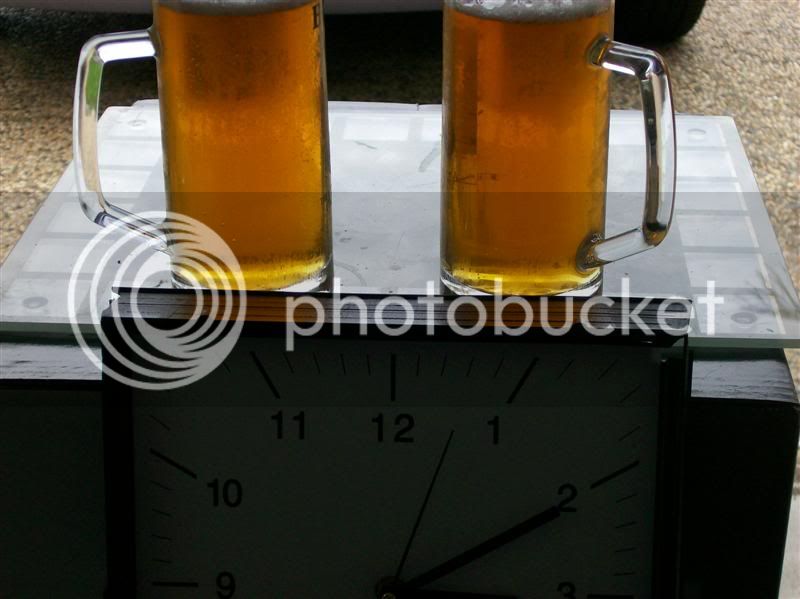Clint Eastwood
Well-Known Member
- Joined
- Apr 2, 2013
- Messages
- 164
- Reaction score
- 64
Hi guys,
I have done 3 brews in the last couple of weeks and tried something new.
I have not had time to build my wort-chiller yet so got to thinking about how I could reduce cold break in the FV.
So far it has worked on the last three brews a treat.
Just before I add the irish moss and final hopping I turn off the heat to the boiler.
I then take 4 litres of ice cold water and plunge them into the hot wort.
I then bring the boiler back up to boiling point and noticed I get a new thick creamy foam just like that of initial boil point.
I keep boiling and it normally cooks back into the wort after 5 minutes.
I then final hop and pitch the irish moss and do the usual 15 minutes boil.
I have found the cold break has been reduced from between 1/2 to 1 inch to a thin layer in the bottom of the FV.
The beers seem much clearer coming out of the Primary to secondary.
Give it a try it appears the cold break drops out with the hot break.
I have done 3 brews in the last couple of weeks and tried something new.
I have not had time to build my wort-chiller yet so got to thinking about how I could reduce cold break in the FV.
So far it has worked on the last three brews a treat.
Just before I add the irish moss and final hopping I turn off the heat to the boiler.
I then take 4 litres of ice cold water and plunge them into the hot wort.
I then bring the boiler back up to boiling point and noticed I get a new thick creamy foam just like that of initial boil point.
I keep boiling and it normally cooks back into the wort after 5 minutes.
I then final hop and pitch the irish moss and do the usual 15 minutes boil.
I have found the cold break has been reduced from between 1/2 to 1 inch to a thin layer in the bottom of the FV.
The beers seem much clearer coming out of the Primary to secondary.
Give it a try it appears the cold break drops out with the hot break.


























![BREWING THERMOMETER STICKERS ACCURATELY MONITOR FERMENTING BEER & WINE LIQUID TEMPERATURES 5PCS HOME BREW SPIRITS WINE LCD ADHESIVE [US]](https://m.media-amazon.com/images/I/311DDjo2X3L._SL500_.jpg)
















